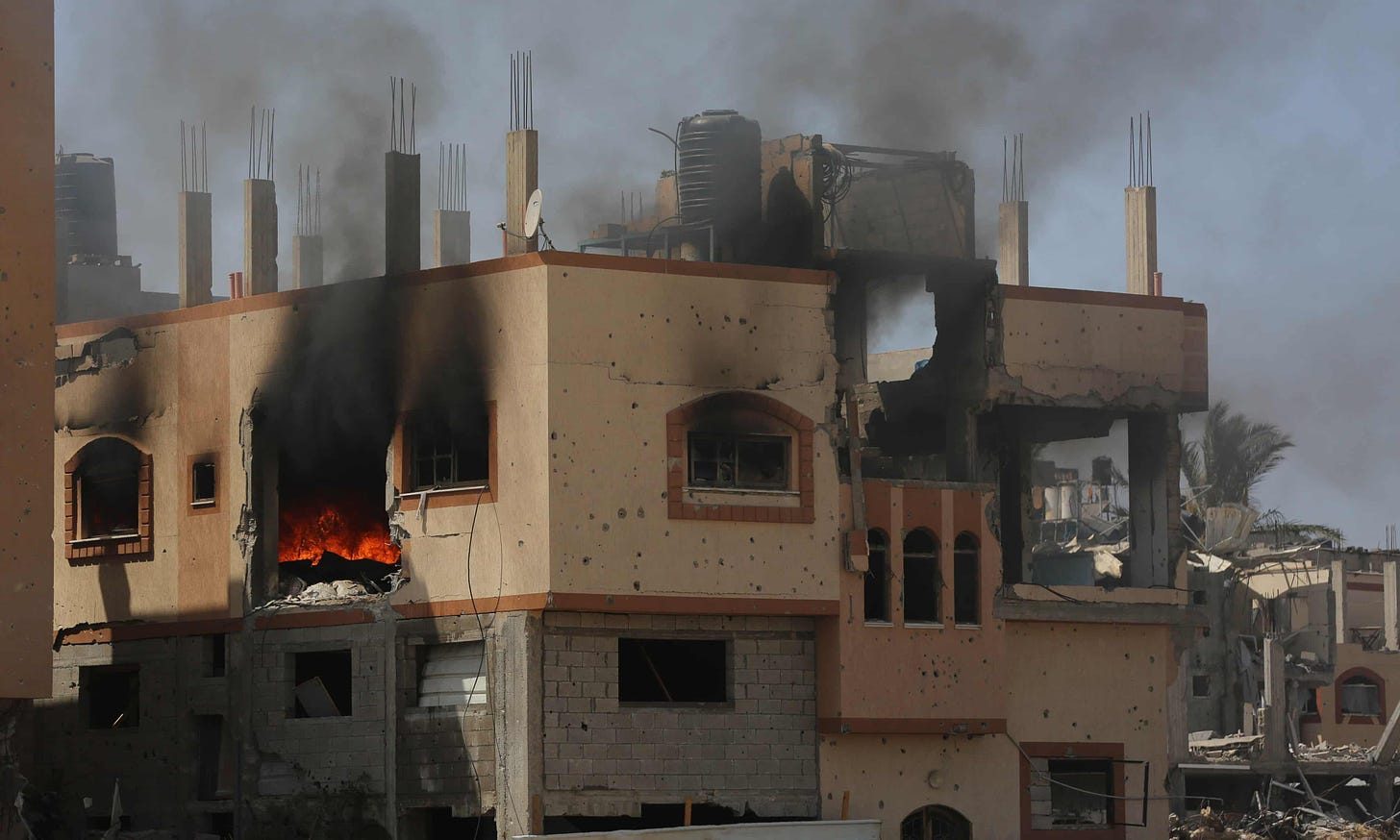
The ashes had barely settled on a Rafah tent camp incinerated by an Israeli airstrike before the next, gorged massacre presented itself for posterity’s gloomy archive. It was intended as a golden operation and had been months in the making. The rescue of four Israeli hostages, the killing of three others (bound to happen for the expertly inclined), and the massacre of over 274 Palestinians at the Nuseirat refugee camp were the end result.
The logistics that led to the bloodbath had been rehearsed with detail verging on the manic. Many a vengeful mind was at play. Two buildings were constructed for training purposes. Participants involved the special counter-terrorism unit Yamam, Israel’s internal security agency Shin Bet, and members of the Israeli Defence Forces. An enormous casualty rate would have already been contemplated given the remarks of IDF spokesman, Rear Adm. Daniel Hagari. “We understood that in those apartments with those guards, daytime will be the ultimate surprise.”
The lies barely have time to fledge. First, the numbers. Hagari could only count “dozens,” and “knew of less than 100.” He conceded to not knowing how many of such a reduced number were civilians. Israel’s Foreign Minister, Israel Katz, was happy to soften the carnage in attacking his country’s detractors. “Only Israel’s enemies complained about the casualties of Hamas terrorists and their accomplices.”
Then came the praise, manifold, effusive. The Israeli Defence Minister Yoav Gallant cooed with satisfaction, calling the effort “one of the most extraordinary operations.” Prime Minister Benjamin Netanyahu merely offered the following morsel: “Israel does not surrender to terrorism.”
Furthermore, no civilian trucks, claimed the IDF, were used in the operation. Yet undercover vehicles were apparently deployed, one very much resembling those used by Israel to traffic commercial goods into Gaza; another being a white Mercedes truck packed and stacked with furniture and miscellaneous belongings typical of the dislocated and dispossessed. Disgorged from the latter, Palestinian eye-witness accounts noted men in plainclothes and some 10 heavily armed soldiers ready for mischief. The commencement of firing signalled the start of the butchery.
The UN Special Rapporteur of the Occupied Palestinian Territories, Francesca Albanese, was certain. The IDF, she stated with exasperation, had “perfidiously” hidden “in an aid truck.” This constituted “‘humanitarian camouflage’ at another level.” While expressing relief at the rescue of four hostages, the enterprise “should not have come at the expense of at least 200 Palestinians, including children, killed and over 400 injured by Israel and allegedly foreign soldiers.”
In time, it became clear that the mission, venerated for its secrecy and praised for its planning, had not caught the Hamas guards responsible for three male hostages by surprise. They duly engaged the Yamam operatives. “Immediately, it became a war zone,” reservist brigadier general Amir Avivi told The Washington Post. The Israeli air force commenced indulgent fire. Death reigned at Nuseirat for some 75 minutes, concealed by the now standard refrain by the IDF: “Aircraft struck dozens of military targets for the success of the operation.”
Other, more tormented descriptions seemed closer to the mark. The Intercept noted the observations of a Palestinian witness by the name of Suhail Mutlaq Abu Nasser. “The area turned to ashes… I couldn’t find my wife and started calling out to those around me to ensure they were still alive.” The account goes on to document the use of armed quadcopter drones, the presence of tank tracks, the hovering of Apache attack helicopters, the targeting of homes by missiles. Camp resident Anas Alayyan was also convinced that the entire military operation by Israeli forces did not fall short of a mass execution.
There is a pattern here, a murderous ratio justified by that most elastic yet horrific of reasons: self-defence. The hostage rescue will go down a treat in Israel. The names of those captured by Hamas on October 7 will be anointed in Israeli mythology: Noa Argamani, Almog Meir Jan, Andrey Kozlov, Shlomi Ziv. But at what cost to those around them?
In addition to the slaughter, some indication of the aftermath is provided by Al Jazeera. “The wounded were taken to Al-Aqsa Martyrs Hospital in Deir el-Balah, an already overwhelmed facility.” Medics are found to be in utter despair.
The scale of killing on this score also raises troubling issues with Israel’s closest ally. Despite some political grumbling in the ranks, the Biden administration remains steadfast in support. The deaths in Rafah were still excusable because, in the words of US State Department spokesperson, Matthew Miller, Israel had not engaged in “a military operation on the scale of those previous operations [in Khan Younis and in Gaza City].”
The hefty death toll of Palestinian civilians in the Nuseirat operation was of lesser concern to President Joe Biden than the welfare of Israeli hostages. Speaking in Paris, Biden welcomed “the safe rescue of four hostages that were returned to their families in Israel. We won’t stop working until all the hostages come home and a ceasefire is reached.”
The sanguinary episode at Nuseirat is hard to stomach, even by Biden’s rubbery standards. It stands to reason. The entire operation had the buttressing of what the New York Times reported to be “intelligence and other logistical support” from the United States. Two Israeli intelligence officials also confirmed that “American military officials in Israel provided some of the intelligence about the hostages rescued Saturday.” And let us not forget murderous military hardware, readily supplied from US defence companies. It follows that the lives of Israeli hostages, dubbed “diamonds” by their rescuers, are invaluable, the precious stones of Israeli-US policy. The Palestinians, on the other hand, are mere coal dust.



